- Home
- Michael Chabon
The Amazing Adventures of Kavalier & Clay
The Amazing Adventures of Kavalier & Clay Read online
Praise for
The Amazing Adventures of Kavalier & Clay
Winner of
The Pulitzer Prize
The New York Society Library Book Award
The Bay Area Book Reviewers Award
Finalist for
The National Book Critics Circle Award
The PEN/Faulkner Award
The Los Angeles Times Book Prize
Named one of Entertainment Weekly’s
Best Books of the Decade
“The depth of Chabon’s thought, his sharp language, his inventiveness and his ambition make this a novel of towering achievement.”
—The New York Times Book Review
“I’m not sure what the exact definition of a ‘great American novel’ is, but I’m pretty sure that Michael Chabon’s sprawling, idiosyncratic, and wrenching new book is one.… [It] had me hooked from the first, wistful, epic-tinged sentence … to the final poignant line.”
—New York
“Towering, swash-buckling thrill of a book … the themes are masterfully explored, leaving the book’s sense of humor intact and characters so tightly developed they could walk off the page.”
—Newsweek
“A page-turner in the most expansive sense of the word: its gripping plot pushes readers forward.… Chabon is a reader’s writer, with sentences so cozy they’ll wrap you up and kiss you goodnight.”
—Chicago Tribune
“Mr. Chabon has fashioned a big, ripe, excitingly imaginative novel.… Especially impressive about The Amazing Adventures of Kavalier & Clay is its success in reaching for big settings (the top of the Empire State Building), big creative leaps (Citizen Kane plays a role here), and big historical relevance without strain.”
—The New York Times
“Some books you read for their plot, some for their style. When, like Chabon’s, both are exceptional, you’re in a rare place.”
—USA Today
“Lyrical … exquisitely patterned … composed with detailed scenes, and spotted with some rapturous passages.”
—Entertainment Weekly
“The kind of charged prose that leaps six hundred pages of fantasy and social history in a single bound … never before told with as much imagination, verve and affection.”
—Time
“[Chabon’s] magnum opus.”
—The New York Review of Books
“Richly imagined and unexpectedly moving, Kavalier & Clay shows a thoroughbred author writing at the peak of his talents.”
—San Francisco Chronicle
“Starts out as one of the most pleasurable novels of the past few years. It ends as one of the most moving.”
—The Atlanta Journal-Constitution
“Michael Chabon’s new novel is the product of sparkling intelligence, undeniable talent, and consummate skill … a triumph both of style and storytelling.”
—South Florida Sun-Sentinel
“[Chabon’s] biggest and most ambitious work so far. High-spirited, fantastic yet historically grounded, written in a charming, fluent, witty prose, it is a highly engaging and entertaining book.”
—Newsday
“Chabon’s highly propelled, magnificently furnished, linguistically unbuttoned and joyfully melancholy tale … is not merely hypnotically compelling but, even better, fall-on-the-floor-funny-but-with-a-lump-in-your-throat.”
—Memphis Commercial Appeal
“Chabon takes center stage as a literary Houdini. It’s a crowd-wowing performance, one that pushes the author toward the top ranks of his generation of American writers.”
—The Denver Post
“Well researched and deeply felt, this rich, expansive and hugely satisfying novel will delight a wide range of readers.”
—Publishers Weekly (starred review)
“Kavalier & Clay is full of the kind of exquisitely figurative language and gorgeous sentences for which Chabon is deservedly celebrated.”
—The Philadelphia Inquirer
“More than a novel about the American Dream … a grand novel about dreamers selling dreams, reminding us that part of the thrill of dreaming is not the dream itself, but the realization that we can dream.”
—CNN.com
“This is a glad-hearted novel, rich in story and character and invention, and an argument for the virtues of escapism.”
—Minneapolis Star Tribune
“A stroke of sheer conceptual genius … [a] huge enthralling third novel.”
—Kirkus Reviews (starred review)
“The Amazing Adventures of Kavalier & Clay is an important, generous, beautifully written book, rich in wit and detail, overbrimming with marvels of narrative invention.”
—CHARLES FRAZIER
ALSO BY MICHAEL CHABON
The Astonishing Secret of Awesome Man
Manhood for Amateurs
Maps and Legends
Gentlemen of the Road
The Yiddish Policemen’s Union
The Final Solution
Summerland
Werewolves in Their Youth
Wonder Boys
A Model World and Other Stories
The Mysteries of Pittsburgh
This is a work of fiction. Names, characters, places, and incidents are the products of the author’s imagination or are used fictitiously. Any resemblance to actual events, locales, or persons, living or dead, is entirely coincidental.
2012 Random House Trade Paperbacks Edition
Copyright © 2000 by Michael Chabon
Reading group guide copyright © 2012 by Random House, Inc.
Introduction to new material copyright © 2011 by Michael Chabon.
All rights reserved.
Published in the United States by Random House Trade Paperbacks, an imprint of The Random House Publishing Group, a division of Random House, Inc., New York.
RANDOM HOUSE TRADE PAPERBACKS and colophon are trademarks of Random House, Inc.
RANDOM HOUSE READER’S CIRCLE & Design is a registered trademark of Random House, Inc.
Originally published in hardcover in the United States by Random House, an imprint of The Random House Publishing Group, a division of Random House, Inc., in 2000.
“An Untold Tale of Kavalier & Clay: Breakfast in the Wreck” was first published in The Virginia Quarterly Review (Spring 2004). Copyright © 2004 by Michael Chabon. “The Return of the Amazing Cavalieri: From Untold Tales of Kavalier & Clay” was first published in McSweeney’s no. 7. Copyright © 2001 by Michael Chabon. “Introduction to Brian K. Vaughn’s The Escapists” was first published in The Escapists (Dark Horse Books, 2007). Copyright © 2007 by Michael Chabon. “A Postscript” was first published in Zap! Pow! Bam! The Superhero: The Golden Age of Comic Books, 1938–1950 (The William Breman Jewish Heritage & Holocaust Museum, 2004) Copyright © 2004 by Michael Chabon.
Library of Congress Cataloging-in-Publication Data
Chabon, Michael.
The amazing adventures of Kavalier & Clay : a novel / Michael Chabon.
p. cm.
eISBN: 978-0-8129-9367-7
1. Comic books, strips, etc.—Authorship—Fiction. 2. Heroes in mass media—Fiction. 3. Czech Americans—Fiction. 4. New York (N.Y.)—Fiction. 5. Young men—Fiction. 6. Artists—Fiction. I. Title.
PS3553.H15 A82 2000
813′.54—dc21 00-029063
www.randomhousereaderscircle.com
Cover design and illustration: Will Staehle
v3.1
To my father
We have this history of impossible solutions
for insoluble problems.
—WILL EISNER, in conversation
Wonderful e
scape!
—NATHANIEL HAWTHORNE, “Wakefield.”
CONTENTS
Cover
Other Books by This Author
Title Page
Copyright
Dedication
Epigraph
PART I THE ESCAPE ARTIST
Chapter 1
Chapter 2
Chapter 3
Chapter 4
PART II A COUPLE OF BOY GENIUSES
Chapter 1
Chapter 2
Chapter 3
Chapter 4
Chapter 5
Chapter 6
Chapter 7
Chapter 8
Chapter 9
Chapter 10
Chapter 11
Chapter 12
PART III THE FUNNY-BOOK WAR
Chapter 1
Chapter 2
Chapter 3
Chapter 4
Chapter 5
Chapter 6
Chapter 7
Chapter 8
Chapter 9
Chapter 10
Chapter 11
Chapter 12
Chapter 13
Chapter 14
Chapter 15
PART IV THE GOLDEN AGE
Chapter 1
Chapter 2
Chapter 3
Chapter 4
Chapter 5
Chapter 6
Chapter 7
Chapter 8
Chapter 9
Chapter 10
Chapter 11
Chapter 12
Chapter 13
Chapter 14
Chapter 15
Chapter 16
Chapter 17
PART V RADIOMAN
Chapter 1
Chapter 2
Chapter 3
Chapter 4
Chapter 5
Chapter 6
Chapter 7
PART VI THE LEAGUE OF THE GOLDEN KEY
Chapter 1
Chapter 2
Chapter 3
Chapter 4
Chapter 5
Chapter 6
Chapter 7
Chapter 8
Chapter 9
Chapter 10
Chapter 11
Chapter 12
Chapter 13
Chapter 14
Chapter 15
Chapter 16
Chapter 17
Chapter 18
Chapter 19
Chapter 20
Author’s Note
Odds & Ends
Why Are You Still Reading? The Book’s Over. Go Play Outside.
Breakfast in the Wreck
The Return of the Amazing Cavalieri
The Crossover
Fifty Dollars Takes It Home
A Reader’s Guide
About the Author
IN LATER YEARS, holding forth to an interviewer or to an audience of aging fans at a comic book convention, Sam Clay liked to declare, apropos of his and Joe Kavalier’s greatest creation, that back when he was a boy, sealed and hog-tied inside the airtight vessel known as Brooklyn, New York, he had been haunted by dreams of Harry Houdini. “To me, Clark Kent in a phone booth and Houdini in a packing crate, they were one and the same thing,” he would learnedly expound at WonderCon or Angoulême or to the editor of The Comics Journal. “You weren’t the same person when you came out as when you went in. Houdini’s first magic act, you know, back when he was just getting started. It was called ‘Metamorphosis.’ It was never just a question of escape. It was also a question of transformation.” The truth was that, as a kid, Sammy had only a casual interest, at best, in Harry Houdini and his legendary feats; his great heroes were Nikola Tesla, Louis Pasteur, and Jack London. Yet his account of his role—of the role of his own imagination—in the Escapist’s birth, like all of his best fabulations, rang true. His dreams had always been Houdiniesque: they were the dreams of a pupa struggling in its blind cocoon, mad for a taste of light and air.
Houdini was a hero to little men, city boys, and Jews; Samuel Louis Klayman was all three. He was seventeen when the adventures began: bigmouthed, perhaps not quite as quick on his feet as he liked to imagine, and tending to be, like many optimists, a little excitable. He was not, in any conventional way, handsome. His face was an inverted triangle, brow large, chin pointed, with pouting lips and a blunt, quarrelsome nose. He slouched, and wore clothes badly: he always looked as though he had just been jumped for his lunch money. He went forward each morning with the hairless cheek of innocence itself, but by noon a clean shave was no more than a memory, a hoboish penumbra on the jaw not quite sufficient to make him look tough. He thought of himself as ugly, but this was because he had never seen his face in repose. He had delivered the Eagle for most of 1931 in order to afford a set of dumbbells, which he had hefted every morning for the next eight years until his arms, chest, and shoulders were ropy and strong; polio had left him with the legs of a delicate boy. He stood, in his socks, five feet five inches tall. Like all of his friends, he considered it a compliment when somebody called him a wiseass. He possessed an incorrect but fervent understanding of the workings of television, atom power, and antigravity, and harbored the ambition—one of a thousand—of ending his days on the warm sunny beaches of the Great Polar Ocean of Venus. An omnivorous reader with a self-improving streak, cozy with Stevenson, London, and Wells, dutiful about Wolfe, Dreiser, and Dos Passos, idolatrous of S. J. Perelman, his self-improvement regime masked the usual guilty appetite. In his case the covert passion—one of them, at any rate—was for those two-bit argosies of blood and wonder, the pulps. He had tracked down and read every biweekly issue of The Shadow going back to 1933, and he was well on his way to amassing complete runs of The Avenger and Doc Savage.
The long run of Kavalier & Clay—and the true history of the Escapist’s birth—began in 1939, toward the end of October, on the night that Sammy’s mother burst into his bedroom, applied the ring and iron knuckles of her left hand to the side of his cranium, and told him to move over and make room in the bed for his cousin from Prague. Sammy sat up, heart pounding in the hinges of his jaw. In the livid light of the fluorescent tube over the kitchen sink, he made out a slender young man of about his own age, slumped like a question mark against the door frame, a disheveled pile of newspapers pinned under one arm, the other thrown as if in shame across his face. This, Mrs. Klayman said, giving Sammy a helpful shove toward the wall, was Josef Kavalier, her brother Emil’s son, who had arrived in New York tonight on a Greyhound bus, all the way from San Francisco.
“What’s the matter with him?” Sammy said. He slid over until his shoulders touched cold plaster. He was careful to take both of the pillows with him. “Is he sick?”
“What do you think?” said his mother, slapping now at the vacated expanse of bedsheet, as if to scatter any offending particles of himself that Sammy might have left behind. She had just come home from her last night on a two-week graveyard rotation at Bellevue, where she worked as a psychiatric nurse. The stale breath of the hospital was on her, but the open throat of her uniform gave off a faint whiff of the lavender water in which she bathed her tiny frame. The natural fragrance of her body was a spicy, angry smell like that of fresh pencil shavings. “He can barely stand on his own two feet.”
Sammy peered over his mother, trying to get a better look at poor Josef Kavalier in his baggy tweed suit. He had known, dimly, that he had Czech cousins. But his mother had not said a word about any of them coming to visit, let alone to share Sammy’s bed. He wasn’t sure just how San Francisco fitted into the story.
“There you are,” his mother said, standing up straight again, apparently satisfied at having driven Sammy onto the easternmost five inches of the mattress. She turned to Josef Kavalier. “Come here. I want to tell you something.” She grabbed hold of his ears as if taking a jug by the handles, and crushed each of his cheeks in turn with her lips. “You made it. All right? You’re here.”
“All right,” said her nephew. He did not
sound convinced.
She handed him a washcloth and went out. As soon as she left, Sammy reclaimed a few precious inches of mattress while his cousin stood there, rubbing at his mauled cheeks. After a moment, Mrs. Klayman switched off the light in the kitchen, and they were left in darkness. Sammy heard his cousin take a deep breath and slowly let it out. The stack of newsprint rattled and then hit the floor with a heavy thud of defeat. His jacket buttons clicked against the back of a chair; his trousers rustled as he stepped out of them; he let fall one shoe, then the other. His wristwatch chimed against the water glass on the nightstand. Then he and a gust of chilly air got in under the covers, bearing with them an odor of cigarette, armpit, damp wool, and something sweet and somehow nostalgic that Sammy presently identified as the smell, on his cousin’s breath, of prunes from the leftover ingot of his mother’s “special” meatloaf—prunes were only a small part of what made it so very special—which he had seen her wrap like a parcel in a sheet of wax paper and set on a plate in the Frigidaire. So she had known that her nephew would be arriving tonight, had even been expecting him for supper, and had said nothing about it to Sammy.
Josef Kavalier settled back against the mattress, cleared his throat once, tucked his arms under his head, and then, as if he had been unplugged, stopped moving. He neither tossed nor fidgeted nor even so much as flexed a toe. The Big Ben on the nightstand ticked loudly. Josef’s breathing thickened and slowed. Sammy was just wondering if anyone could possibly fall asleep with such abandon when his cousin spoke.
“As soon as I can fetch some money, I will find a lodging, and leave the bed,” he said. His accent was vaguely German, furrowed with an odd Scots pleat.
“That would be nice,” Sammy said. “You speak good English.”
“Thank you.”
“Where’d you learn it?”
“I prefer not to say.”
“It’s a secret?”
“It is a personal matter.”
“Can you tell me what you were doing in California?” said Sammy. “Or is that confidential information too?”
“I was crossing over from Japan.”
“Japan!” Sammy was sick with envy. He had never gone farther on his soda-straw legs than Buffalo, never undertaken any crossing more treacherous than that of the flatulent poison-green ribbon that separated Brooklyn from Manhattan Island. In that narrow bed, in that bedroom hardly wider than the bed itself, at the back of an apartment in a solidly lower-middle-class building on Ocean Avenue, with his grandmother’s snoring shaking the walls like a passing trolley, Sammy dreamed the usual Brooklyn dreams of flight and transformation and escape. He dreamed with fierce contrivance, transmuting himself into a major American novelist, or a famous smart person, like Clifton Fadiman, or perhaps into a heroic doctor; or developing, through practice and sheer force of will, the mental powers that would give him a preternatural control over the hearts and minds of men. In his desk drawer lay—and had lain for some time—the first eleven pages of a massive autobiographical novel to be entitled either (in the Perelmanian mode) Through Abe Glass, Darkly or (in the Dreiserian) American Disillusionment (a subject of which he was still by and large ignorant). He had devoted an embarrassing number of hours of mute concentration—brow furrowed, breath held—to the development of his brain’s latent powers of telepathy and mind control. And he had thrilled to that Iliad of medical heroics, The Microbe Hunters, ten times at least. But like most natives of Brooklyn, Sammy considered himself a realist, and in general his escape plans centered around the attainment of fabulous sums of money.

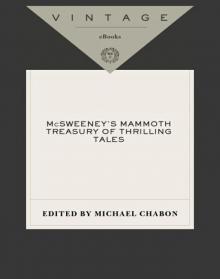 McSweeney's Mammoth Treasury of Thrilling Tales
McSweeney's Mammoth Treasury of Thrilling Tales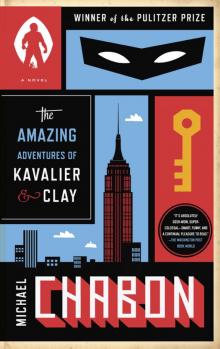 The Amazing Adventures of Kavalier & Clay
The Amazing Adventures of Kavalier & Clay The Yiddish Policemen's Union
The Yiddish Policemen's Union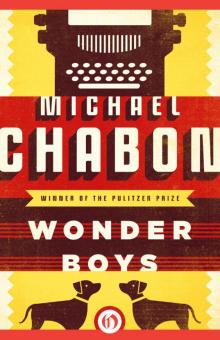 Wonder Boys
Wonder Boys Manhood for Amateurs
Manhood for Amateurs Kingdom of Olives and Ash: Writers Confront the Occupation
Kingdom of Olives and Ash: Writers Confront the Occupation Gentlemen of the Road: A Tale of Adventure
Gentlemen of the Road: A Tale of Adventure A Model World and Other Stories
A Model World and Other Stories Pops: Fatherhood in Pieces
Pops: Fatherhood in Pieces McSweeney's Enchanted Chamber of Astonishing Stories
McSweeney's Enchanted Chamber of Astonishing Stories Summerland
Summerland Telegraph Avenue
Telegraph Avenue The Final Solution
The Final Solution The Mysteries of Pittsburgh
The Mysteries of Pittsburgh Werewolves in Their Youth
Werewolves in Their Youth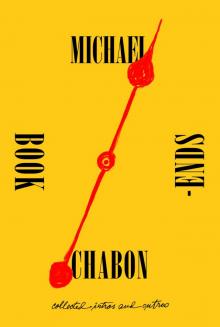 Bookends
Bookends Fight of the Century
Fight of the Century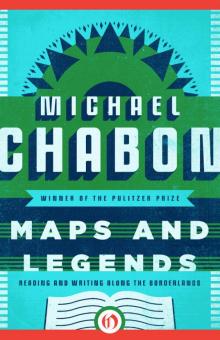 Maps and Legends
Maps and Legends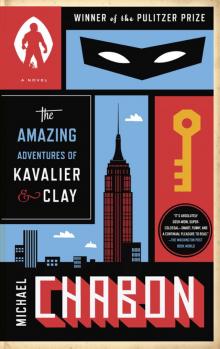 The Amazing Adventures of Kavalier & Clay (with bonus content)
The Amazing Adventures of Kavalier & Clay (with bonus content) Kingdom of Olives and Ash
Kingdom of Olives and Ash Pops
Pops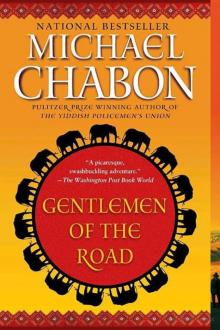 Gentlemen of the Road
Gentlemen of the Road The Final Solution: A Story of Detection
The Final Solution: A Story of Detection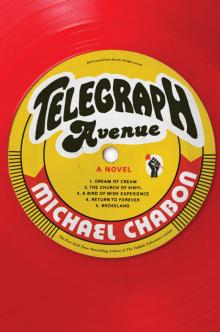 Telegraph Avenue: A Novel
Telegraph Avenue: A Novel